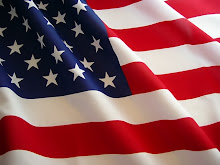It is an understatement to simply say that that Arab/Muslim identity has been negatively portrayed throughout the majority of Hollywood cinema. Images and scenes of terrorists, assassins, brutalizing acts of violence towards the innocent, and a complete opposition to American ideals have summarized what it means to Arab/Muslim to the American entertainment industry. Recently, a new movie titled The Kingdom has challenged the “us vs. them” binary by addressing the reality and complexities of political and culture differences.
 The Kingdom is the story of the aftermath of a terrorist suicide-bomber attack on a foreign-workers facility site in Saudi Arabia. Because of the attack, an FBI team (portrayed by the well known celebrities Jamie Foxx, Heather Garner, and Chris Cooper) is sent to investigate the bombing and must adapt to the intensity, culture shock, and political tension of the situation. Issues of race (Foxx being African American), gender (Garner is prohibited from wearing a t-shirt that exposes her arms despite the extreme heat) and power hierarchy (the Americans challenge their enforced curfew, discontent with being demobilized) remain at the plot’s forefront throughout the movie.
The Kingdom is the story of the aftermath of a terrorist suicide-bomber attack on a foreign-workers facility site in Saudi Arabia. Because of the attack, an FBI team (portrayed by the well known celebrities Jamie Foxx, Heather Garner, and Chris Cooper) is sent to investigate the bombing and must adapt to the intensity, culture shock, and political tension of the situation. Issues of race (Foxx being African American), gender (Garner is prohibited from wearing a t-shirt that exposes her arms despite the extreme heat) and power hierarchy (the Americans challenge their enforced curfew, discontent with being demobilized) remain at the plot’s forefront throughout the movie.Unlike the majority of action movies, The Kingdom also tells the familial and personal story of the terrorists. The audience is exposed to the terrorists’ everyday habits and interactions, translated prayers, and community involvement. This presents an “often deliberately” hidden perspective on Arab/Muslim life. In doing so, The Kingdom is able to humanize and devillianize the terrorists, ultimately breaking down the protagonist versus antagonist construct as well as the common “us versus them” binary.

The Kingdom also deconstructs the “good Muslim/bad Muslim” dichotomy with the character Al-Ghazi, a military officer placed in charge of the Americans and who is also very dedicated to capturing the terrorists. Throughout the movie Al-Ghazi and Jamie Foxx face numerous challenges while growing closer together, allowing the audience to connect the common goals and ideals (patriotism, family values/responsibility) shared by the not-so different individuals. By contrasting their cultural and political similarities and differences, The Kingdom poses the complexities and shortcomings of the “good Muslim/bad Muslim” ideology. At the end of the movie, Al-Ghazi defies orders and takes the FBI agents to speak with terrorist associates, local youth, and corrupt governing officials. Al-Ghazi is then killed rescuing the captured FBI agent, followed by a scene displaying Jamie Foxx consoling his son. Foxx uses the same lines and gestures when comforting his diseased best friend’s son (seen in the beginning of the film), representing the established camaraderie between Al-Ghazi and Foxx, the reconciling of cultural differences, and the universal pain shared by all those affected by war.










